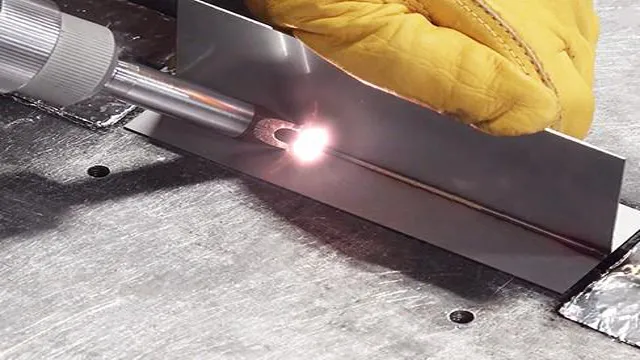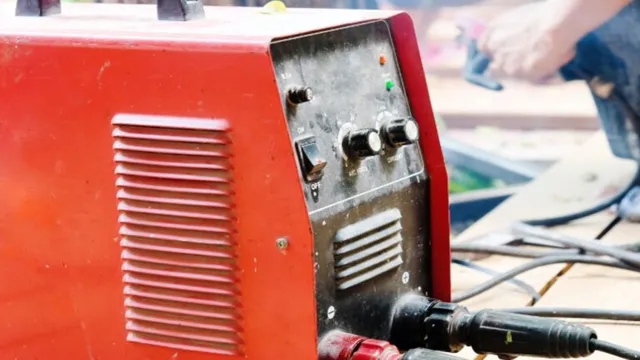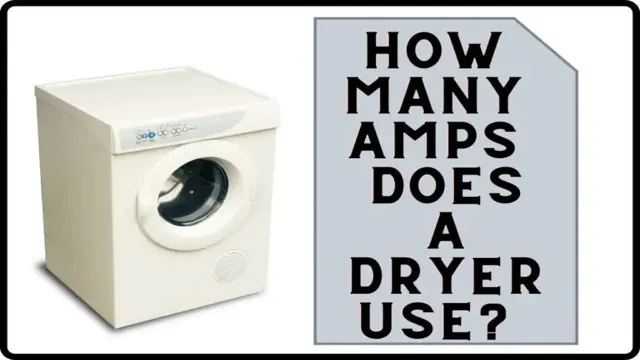Can I Use Welding Machine at Home? Safety Guidelines for Home Welding.

Do you ever find yourself wanting to take on DIY welding projects at home but feel unsure about how to use a welding machine? Well, you’re not alone. Many people are intrigued by the art of welding but intimidated by the equipment. The good news is that with the right knowledge and safety precautions, anyone can learn to use a welding machine at home.
In this blog, we’ll cover the basics of welding machines, including what types are available, how to stay safe while using them, and how to choose the right one for your projects. So, don your welding helmet and let’s get started!
Safety First
Can I use a welding machine at home? This is a question that most DIY enthusiasts ask themselves. The answer is yes, you can use a welding machine at home, but with caution. First, you need to know the types of welding machines available and the safety precautions to take.
There are stick, MIG, TIG, and plasma cutting machines, all with different settings and requirements. As a beginner, it’s advisable to start with a stick or MIG welding machine, which are easier to use. When using a welding machine, always wear protective clothing such as welder’s gloves, an apron, a welding helmet, and safety glasses.
Welding sparks and UV light can cause damage to your eyes and skin, so it’s essential to protect yourself. Always ensure you have enough ventilation when using a welding machine as it produces fumes that can be hazardous to your health if inhaled. Lastly, ensure that you have a fire extinguisher nearby when welding to prevent fire outbreaks.
Remember, safety first when using a welding machine.
Understanding the Risks of Welding at Home
Welding is a common DIY project for those who love tinkering with metal. However, it’s important to understand the risks involved before diving into this rewarding and challenging hobby. Safety should always come first, and you must have the right safety gear before starting.
Welding produces intense heat and sparks, which can cause severe burns or ignite nearby flammable objects. Welding also produces hazardous fumes, such as carbon monoxide, that can affect your respiratory system if inhaled. It’s crucial to wear a welding helmet, gloves, and a respirator when working with metals to avoid the harmful effects of heat and fumes.
We should also make sure the welding area is cleared of flammable materials, and a fire extinguisher should be readily available. By taking these precautions, you can safely enjoy the art of welding without putting yourself or others at risk.

Personal Protective Equipment (PPE) for Welding at Home
When it comes to undertaking welding projects at home, safety should be your top priority. Welding can be a hazardous process that poses several dangers, and it’s essential to have the right Personal Protective Equipment (PPE) to keep yourself safe. The PPE equipment for welding consists of gloves, aprons, helmets, goggles, and respirators.
These protective gears are essential to protect you from harsh radiations, sparks, flying debris, and fumes that could cause severe damage to your skin, eyes, lungs, and overall health. It’s best to buy high-quality PPE equipment that fits you well and made of a durable material that can withstand the welding environment. By investing in the right PPE equipment and understanding how to use it correctly, you can reduce your risk of sustaining injuries or illnesses while welding at home.
Remember, safety always comes first, so take the necessary precautions and ensure that you have the appropriate PPE gear before proceeding with any welding project.
Setting Up a Safe Working Area
When it comes to setting up a safe working area, it’s important to prioritize safety first. This means taking the necessary precautions to prevent accidents and injuries from occurring. One of the first things to consider is the layout of your workspace.
Make sure there is enough room to move around freely without bumping into objects or other people. Keep the area well-lit and free from clutter or debris that could become a trip hazard. Additionally, it’s essential to have the proper safety equipment on hand, such as goggles, gloves, and helmets, depending on the work being performed.
Always educate yourself and others on proper safety procedures and make sure that everyone in the workspace is aware of the potential hazards and knows how to respond in case of an emergency. By taking these measures, you can ensure that your workspace remains a secure and productive environment.
Types of Welding Machines
If you’re wondering if you can use a welding machine at home, the answer is yes! However, it’s important to choose the right type of welding machine that’s suited for your needs and skill level. There are four main types of welding machines: Stick Welders, MIG Welders, TIG Welders, and Plasma Cutters. Stick Welders are ideal for beginners as they’re easy to use and require basic skills.
MIG Welders are great for welding thicker metals and are versatile in terms of materials that can be welded. TIG Welders are the most precise and offer the highest quality welds, but they’re also the most challenging to use. Lastly, Plasma Cutters are ideal for cutting metal and are often used in metal fabrication.
When using a welding machine at home, safety comes first. Always wear protective gear such as welding helmet, gloves, and clothing that can withstand high temperatures. Make sure the area you’re working in is well-ventilated to avoid inhaling fumes.
Additionally, always read the instruction manual before operating the welding machine to ensure you understand the functions and safety measures in place. With the right precautions and knowledge, using a welding machine at home can be a great investment for DIY projects and more.
Overview of Stick, MIG, and TIG Welding Machines
When it comes to welding machines, there are three main types that are commonly used: stick, MIG, and TIG. Stick welding machines are great for outdoor use, as they can handle rusty or dirty materials with ease. MIG welding machines, on the other hand, are the most commonly used type of welding machine and are great for beginners.
They use a wire feed to create a hot arc that melts the metal and forms a bond. Finally, TIG welding machines use a tungsten electrode to create the arc and provide a precise and clean welding job. Each type of machine has its own set of advantages and disadvantages, so it’s essential to choose the right one for the job at hand.
Overall, welding can be a challenging and rewarding skill to learn, and with the right machine, anyone can create strong and durable welds.
Which Type of Welding Machine Should You Use at Home?
When it comes to welding machines for home use, there are a few different options to consider. One popular type is the stick welder, also known as a shielded metal arc welder (SMAW). This type of machine uses a consumable electrode that melts and fuses the metal together.
Another option is the MIG welder, which uses a wire feed and gas to create a clean weld. Finally, there is the TIG welder, which uses a tungsten electrode and filler material to make precise and high-quality welds. The type of welding machine you should use at home will depend on what kind of projects you plan on tackling, as well as your level of experience and skill.
Stick welding is a good choice for beginners or those on a budget, while MIG and TIG welding machines are better suited for experienced welders who need a higher level of precision and control. With the right welding machine and some basic training, you can tackle all kinds of DIY welding projects with ease.
Considerations Before Buying a Welding Machine for Home Use
If you’re thinking of purchasing a welding machine for home use, there are a few things to consider. Firstly, it’s important to determine whether or not you have the necessary space to store and operate the machine safely. Welding can produce sparks and fumes, which can be a fire hazard if not properly controlled.
You should also think about the type of welding you’ll be doing and what metals you’ll be working with, as different welding processes are suited to different materials. Additionally, consider your skill level and the level of control you’ll have over the machine – some machines are very basic and require a lot of skill to use effectively, while others are more user-friendly. Finally, think about your budget and the long-term costs of owning a welding machine – you’ll need to purchase consumable items like electrodes and shielding gas on a regular basis, and may also need to invest in safety equipment like gloves and goggles.
Overall, a welding machine can be a very useful tool to have at home, but it’s important to do your research and make an informed decision before you buy.
Cost and Quality of Welding Machines
When it comes to buying a welding machine for home use, cost and quality are two crucial factors to consider. While you may be drawn to the cheapest option available, it’s important to keep in mind that the quality of the machine may suffer. Investing in a high-quality welding machine may cost more upfront, but it could save you money in the long run by not needing repairs or replacements that a cheaper machine may require.
On the other hand, you also don’t want to overspend on a machine with features that you don’t need or use. Think about the types of projects you’ll be working on and what features are necessary for those tasks. It’s important to find the right balance between quality and cost to ensure that you get the most value for your money.
Power Requirements and Compatibility with Home Wiring
Before buying a welding machine for home use, it’s important to consider the power requirements and compatibility with your home wiring. Different welding machines require different levels of power, so you’ll want to make sure that your wiring can handle it. If your home wiring isn’t up to par, you may need to make changes to your electrical system before you can safely use a welding machine.
It’s also essential to make sure the welding machine you purchase is compatible with your home wiring and voltage. Using the wrong type of machine or voltage can lead to damage to the machine or even dangerous situations. Take the time to research the type of welding machine that will work best for your home, and make sure your electrical system can handle it.
With a little bit of planning and preparation, you can safely and efficiently weld at home.
Ease of Use and Learning Curve
When deciding on a welding machine for home use, it’s important to consider the ease of use and learning curve. If you’re new to welding or haven’t used a welding machine before, you’ll want to select a machine that is user-friendly and doesn’t require extensive training to operate. Look for machines that have clear and concise instructions, as well as features that make adjustments easy to make.
Some machines even have pre-set settings for commonly welded materials, which can save time and reduce the risk of mistakes. However, if you’re experienced in welding or plan on using the machine frequently, you may want to invest in a more advanced machine that has a steeper learning curve. These machines offer more customization options and can often produce higher-quality welds, but they may require more time to master.
Ultimately, the right welding machine for your needs will depend on your skill level, budget, and welding projects.
Conclusion
In conclusion, whether or not you can use a welding machine at home ultimately depends on your skills, experience, and safety precautions. While it may seem like a fun and convenient DIY project, welding can be dangerous and requires proper training and equipment. So, if you want to weld at home, make sure you do your research, invest in high-quality equipment, and most importantly, prioritize safety over everything else.
After all, a successful DIY project isn’t worth sacrificing your health and well-being!”
FAQs
What types of welding machines can I use at home?
You can use TIG, MIG, stick, or even a flux-cored welding machine at home.
Is it safe to use a welding machine at home?
Yes, it is safe to use a welding machine at home if you follow the proper safety measures such as wearing protective clothing and ensuring proper ventilation.
Do I need a special outlet or power source for a welding machine at home?
Yes, you will need a 220V outlet or a special power source for most welding machines.
How much does a welding machine for home use cost?
The cost of a welding machine for home use can range from a few hundred dollars to several thousand dollars depending on the type and brand.
Can I weld different types of metals using a home welding machine?
Yes, you can weld different types of metals such as steel, aluminum, and copper using a home welding machine, but you will need to use the appropriate type of welding technique and equipment.
What is the difference between a TIG and MIG welding machine?
TIG welding uses a tungsten electrode to create an arc and requires more precision, while MIG welding uses a wire feed and is generally faster but less precise.
Do I need any training or certification to use a welding machine at home?
While it is not required, it is recommended to receive proper training or certification to ensure safe and effective use of a welding machine at home.



